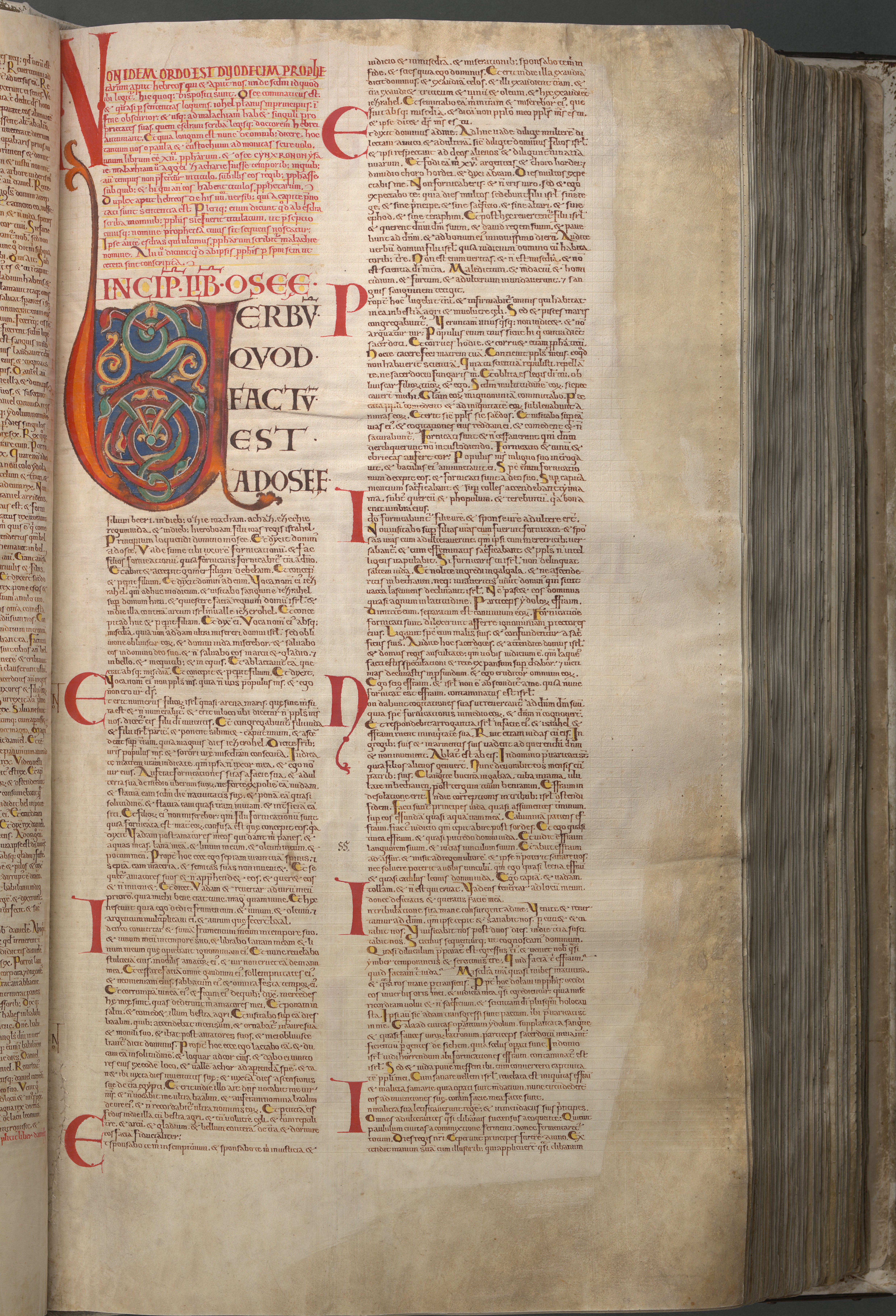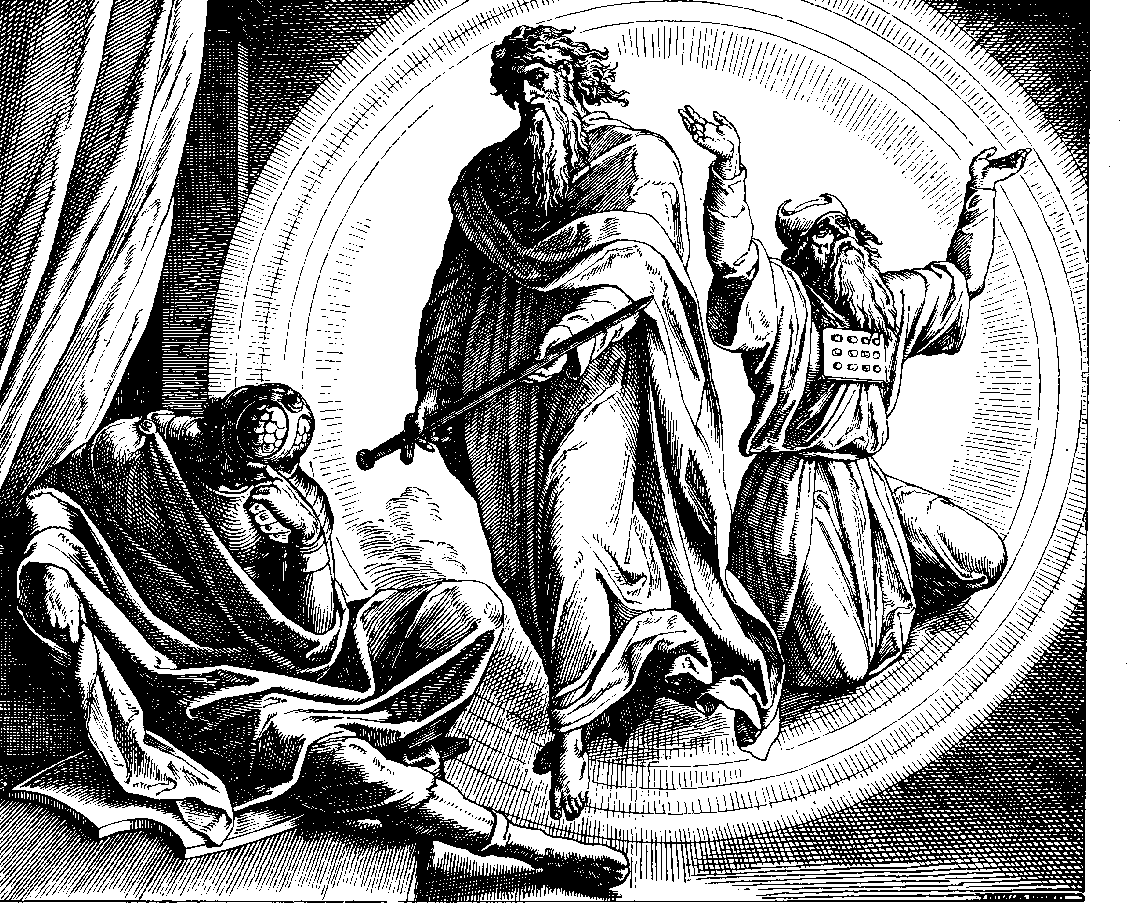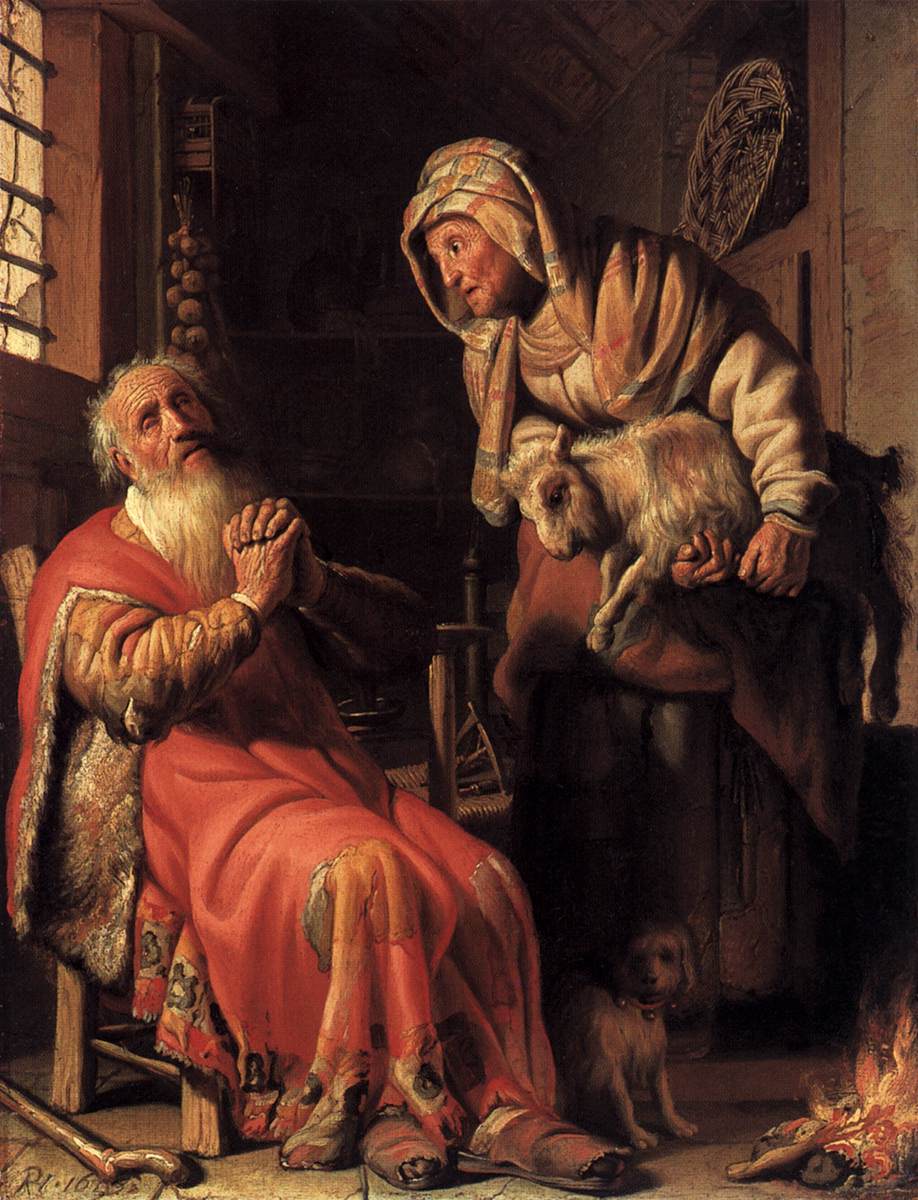|
Galeatum Principium
The ''Prologus Galaetus'' or ''Galeatum principium'' ( lit. and traditionally translated as "helmeted prologue"; or sometimes translated as "helmeted preface") is a preface by Jerome, dated 391–392, to his translation of the '' Liber Regum'' (the book of Kings composed of four parts: the first and second books of Samuel the first and second books of Kings). In this text, Jerome affirms his opposition to the books of the Old Testament which are outside the Hebrew canon. Jerome writes: "This prologue to the Scriptures may be appropriate as a helmeted introduction 'galeatum principium''to all the books which we turn from Hebrew into Latin, so we may be able to know whatever is outside of these is set aside among the apocrypha. Therefore, Wisdom, which is commonly ascribed to Solomon, and the book of Jesus son of Sirach, and Judith and Tobias, and ''The Shepherd'' are not in the canon. I have found the First Book of the Maccabees (is) Hebrew, the Second is Greek, which ... [...More Info...] [...Related Items...] OR: [Wikipedia] [Google] [Baidu] |
Patrologia Latinae, Vol
Patristics or patrology is the study of the List of early Christian writers, early Christian writers who are designated Church Fathers. The names derive from the Classical compound, combined forms of Latin ''pater'' and Greek ''patḗr'' (father). The period is generally considered to run from the end of New Testament times or end of the Apostolic Age () to either AD 451 (the date of the Council of Chalcedon) or to the Second Council of Nicaea in 787. Eras The Church Fathers are generally divided into the Ante-Nicene Fathers, those who lived and wrote before the First Council of Nicaea, Council of Nicaea (325) and the Nicene and Post-Nicene Fathers, those who lived and wrote after 325. Also, the division of the Fathers into Greek and Latin writers is also common. Some of the most prominent Greek Fathers are Justin Martyr, Athanasius of Alexandria, Basil of Caesarea, Gregory of Nazianzus, John Chrysostom, Cyril of Alexandria, and Maximus the Confessor. Among the Latin Fathers a ... [...More Info...] [...Related Items...] OR: [Wikipedia] [Google] [Baidu] |
Book Of Jesus Son Of Sirach
The Book of Sirach () or Ecclesiasticus (; abbreviated Ecclus.) is a Jewish work, originally in Hebrew, of ethical teachings, from approximately 200 to 175 BC, written by the Judahite scribe Ben Sira of Jerusalem, on the inspiration of his father Joshua son of Sirach, sometimes called Jesus son of Sirach or Yeshua ben Eliezer ben Sira. In Egypt, it was translated into Greek by the author's unnamed grandson, who added a prologue. This prologue is generally considered the earliest witness to a canon of the books of the prophets, and thus the date of the text is the subject of intense scrutiny. The book itself is the largest wisdom book from antiquity to have survived. Canonical status Sirach is accepted as part of the canon by Catholics, Eastern Orthodox, and most Oriental Orthodox Christians. The Anglican tradition considers Sirach (which was published with other Greek Jewish books in a separate section of the King James Bible) among the apocryphal books, and read them "f ... [...More Info...] [...Related Items...] OR: [Wikipedia] [Google] [Baidu] |
Ezra–Nehemiah
Ezra–Nehemiah ( he, עזרא נחמיה , ) is a book in the Hebrew Bible found in the Ketuvim section, originally with the Hebrew title of Ezra ( he, עזרא, links=no, ). The book covers the period from the fall of Babylon in 539 BCE to the second half of the 5th century BCE, and tells of the successive missions to Jerusalem of Zerubbabel, Ezra, and Nehemiah, and their efforts to restore the worship of the God of Israel and to create a purified Jewish community. Historical background In the early 6th century Judah rebelled against Babylon and was destroyed (586 BCE). The royal court and the priests, prophets and scribes were taken into captivity in Babylon. There the exiles blamed their fate on disobedience to God and looked forward to a future when a penitent and purified people would be allowed to return to Jerusalem and rebuild the Temple. (These ideas are expressed in the prophets Jeremiah (although he was not exiled to Babylon), Isaiah, and, especially, Ezekie ... [...More Info...] [...Related Items...] OR: [Wikipedia] [Google] [Baidu] |
Ketuvim
The Ketuvim (; hbo, , Modern: ''Kəṯūvīm'', Tiberian: ''Kăṯūḇīm'' "writings") is the third and final section of the Tanakh (Hebrew Bible), after Torah (instruction) and Nevi'im (prophets). In English translations of the Hebrew Bible, this section is usually titled "Writings" or "Hagiographa". In the Ketuvim, I and II Chronicles form one book, along with Ezra and Nehemiah which form a single unit entitled "Ezra–Nehemiah". (In citations by chapter and verse numbers, however, the Hebrew equivalents of "Nehemiah", "I Chronicles" and "II Chronicles" are used, as the system of chapter division was imported from Christian usage.) Collectively, eleven books are included in the Ketuvim. Groups of books ''Sifrei Emet'' In Masoretic manuscripts (and some printed editions), Psalms, Proverbs and Job are presented in a special two-column form emphasizing the parallel stichs in the verses, which are a function of their poetry. Collectively, these three books are known as ... [...More Info...] [...Related Items...] OR: [Wikipedia] [Google] [Baidu] |
Twelve Minor Prophets
The Minor Prophets or Twelve Prophets ( he, שנים עשר, ''Shneim Asar''; arc, תרי עשר, ''Trei Asar'', "Twelve") ( grc, δωδεκαπρόφητον, "the Twelve Prophets"), occasionally Book of the Twelve, is a collection of prophetic books, written between about the 8th and 4th centuries BC, which are in both the Jewish Tanakh and Christian Old Testament. In the Tanakh, they appear as a single book, (''"The Twelve"''), which is the last book of the Nevi'im, the second of three major divisions of the Tanakh. In the Christian Old Testament, the collection appears as twelve individual books, one for each of the prophets: the Book of Hosea, Joel, Amos, Obadiah, Jonah, Micah, Nahum, Habakkuk, Zephaniah, Haggai, Zechariah, and Malachi. Their order, and position in the Old Testament, varies slightly between the Protestant, Catholic and Eastern Orthodox Bibles. The name "Minor Prophets" goes back apparently to St. Augustine, who distinguished the 12 shorter prophetic bo ... [...More Info...] [...Related Items...] OR: [Wikipedia] [Google] [Baidu] |
Nevi'im
Nevi'im (; he, נְבִיאִים ''Nəvīʾīm'', Tiberian: ''Năḇīʾīm,'' "Prophets", literally "spokespersons") is the second major division of the Hebrew Bible (the ''Tanakh''), lying between the Torah (instruction) and Ketuvim (writings). The Nevi'im are divided into two groups. The Former Prophets ( he, נביאים ראשונים ''Nevi'im Rishonim'') consists of the narrative books of Joshua, Judges, Samuel and Kings; while the Latter Prophets ( he, נביאים אחרונים ''Nevi'im Akharonim'') include the books of Isaiah, Jeremiah, Ezekiel, and the Twelve Minor Prophets. Synopsis The Jewish tradition counts a total of eight books in ''Nevi'im'' out of a total of 24 books in the entire Tanakh: there are four books of the Former Prophets, including Joshua and Judges; the collected ''Books of Samuel'' and ''Books of Kings'' are each counted as one book. Among the four books of the Latter Prophets, the major prophets (Isaiah, Jeremiah and Ezekiel) account f ... [...More Info...] [...Related Items...] OR: [Wikipedia] [Google] [Baidu] |
Torah
The Torah (; hbo, ''Tōrā'', "Instruction", "Teaching" or "Law") is the compilation of the first five books of the Hebrew Bible, namely the books of Genesis, Exodus, Leviticus, Numbers and Deuteronomy. In that sense, Torah means the same as Pentateuch or the Five Books of Moses. It is also known in the Jewish tradition as the Written Torah (, ). If meant for liturgic purposes, it takes the form of a Torah scroll ('' Sefer Torah''). If in bound book form, it is called ''Chumash'', and is usually printed with the rabbinic commentaries (). At times, however, the word ''Torah'' can also be used as a synonym for the whole of the Hebrew Bible or Tanakh, in which sense it includes not only the first five, but all 24 books of the Hebrew Bible. Finally, Torah can even mean the totality of Jewish teaching, culture, and practice, whether derived from biblical texts or later rabbinic writings. The latter is often known as the Oral Torah. Representing the core of the Jewish spiri ... [...More Info...] [...Related Items...] OR: [Wikipedia] [Google] [Baidu] |
Hebrew Bible
The Hebrew Bible or Tanakh (;"Tanach" ''Random House Webster's Unabridged Dictionary''. Hebrew: ''Tānāḵh''), also known in Hebrew as Miqra (; Hebrew: ''Mīqrā''), is the Biblical canon, canonical collection of Hebrew language, Hebrew scriptures, including the Torah, the Nevi'im, and the Ketuvim. Different branches of Judaism and Samaritanism have maintained different versions of the canon, including the 3rd-century Septuagint text used by Second-Temple Judaism, the Syriac language Peshitta, the Samaritan Torah, the Dead Sea Scrolls, and most recently the 10th century medieval Masoretic Text, Masoretic text created by the Masoretes currently used in modern Rabbinic Judaism. The terms "Hebrew Bible" or "Hebrew Canon" are frequently confused with the Masoretic text, however, this is a medieval version and one of several ... [...More Info...] [...Related Items...] OR: [Wikipedia] [Google] [Baidu] |
2 Maccabees
2 Maccabees, el, Μακκαβαίων Β´, translit=Makkabaíōn 2 also known as the Second Book of Maccabees, Second Maccabees, and abbreviated as 2 Macc., is a deuterocanonical book which recounts the persecution of Jews under King Antiochus IV Epiphanes and the Maccabean Revolt against him. It concludes with the defeat of the Seleucid Empire general Nicanor in 161 BC by Judas Maccabeus, the leader of the Maccabees. 2 Maccabees was originally written in Koine Greek by an unknown diaspora Jew living in Hellenistic Egypt. It was likely written some time between 150 and 120 BC. Together with the book 1 Maccabees, it is one of the most important sources on the Maccabean Revolt. The work is not a sequel to 1 Maccabees but rather its own independent rendition of the historical events of the Maccabean Revolt. It both starts and ends its history earlier than 1 Maccabees, starting with an incident with the Seleucid official Heliodorus attempting to tax the Second Temple in 178 B ... [...More Info...] [...Related Items...] OR: [Wikipedia] [Google] [Baidu] |
First Book Of The Maccabees
The First Book of Maccabees, also known as First Maccabees (written in shorthand as 1 Maccabees or 1 Macc.), is a book written in Hebrew by an anonymousRappaport, U., ''47. 1 Maccabees'' in Barton, J. and Muddiman, J. (2001)The Oxford Bible Commentary, p. 711 Jewish author after the restoration of an independent Jewish kingdom by the Hasmonean dynasty, around the late 2nd century BC. The original Hebrew is lost and the most important surviving version is the Greek translation contained in the Septuagint. The book is held as canonical scripture by the Catholic, Orthodox, and Oriental Orthodox churches (except for the Orthodox Tewahedo), but not by Protestant denominations nor any major branches of Judaism; it is not part of the Hebrew Bible. Some Protestants consider it to be an apocryphal book (see also Deuterocanonical books). 1 Maccabees is best known for its account of an early victory in the Maccabean Revolt against the Seleucid Empire: the recapture of Jerusalem in the year ... [...More Info...] [...Related Items...] OR: [Wikipedia] [Google] [Baidu] |
The Shepherd Of Hermas
''The Shepherd of Hermas'' ( el, Ποιμὴν τοῦ Ἑρμᾶ, ''Poimēn tou Herma''; la, Pastor Hermae), sometimes just called ''The Shepherd'', is a Christian literary work of the late first half of the second century, considered a valuable book by many Christians, and considered canonical scripture by some of the early Church fathers such as Irenaeus. ''The Shepherd'' was very popular amongst Christians in the 2nd, 3rd, and 4th centuries. It is found in the ''Codex Sinaiticus''. Language and translation The book was originally written in Rome in Koine Greek. A first Latin translation, the ''Vulgata'' (Common language), was made very shortly afterwards. A second Latin translation, the ''Palatina'', was made at the beginning of the fifth century. Of the Greek version, the last fifth or so is missing. The Vulgate Latin translation is the earliest translation and the most complete witness. The ''Shepherd'' was also translated at least twice into the Coptic (Egyptian ... [...More Info...] [...Related Items...] OR: [Wikipedia] [Google] [Baidu] |
Book Of Tobias
The Book of Tobit () ''Tōbith'' or ''Tōbit'' ( and spellings are also attested) itself from he, טובי ''Tovi'' "my good"; Book of Tobias in the Vulgate from the Greek ''Tōbias'', itself from the Hebrew ''Tovyah'' " Yah is good", also known as the Book of Tobias or the Book of Tobi, is a 3rd or early 2nd century BC Jewish work describing how God tests the faithful, responds to prayers, and protects the covenant community (i.e., the Israelites). It tells the story of two Israelite families, that of the blind Tobit in Nineveh and of the abandoned Sarah in Ecbatana. Tobit's son Tobias is sent to retrieve ten silver talents that Tobit once left in Rages, a town in Media; guided and aided by the angel Raphael he arrives in Ecbatana, where he meets Sarah. A demon named Asmodeus has fallen in love with her and kills anyone she intends to marry, but with the aid of Raphael the demon is exorcised and Tobias and Sarah marry, after which they return to Nineveh where Tobit is cured ... [...More Info...] [...Related Items...] OR: [Wikipedia] [Google] [Baidu] |





